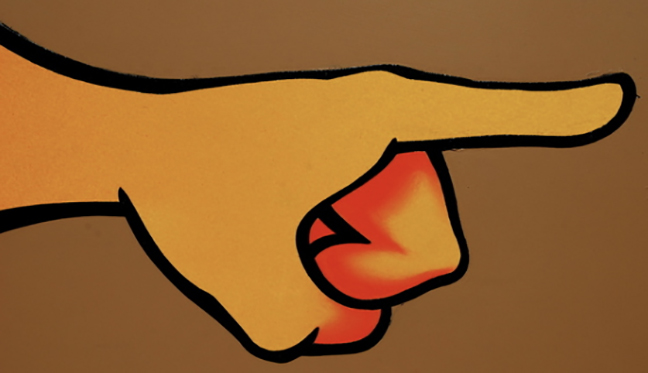 Anyone who has sat in session with me is familiar with my obsession with the unconscious complex—you might say I have a complex about complexes! I often refer to the complex as “the troll beneath the bridge”—an unsightly, and generally unwelcome, force that lies in waiting, ready to decree its unpleasant influence at the slightest provocation. Just walking across the bridge may be enough to wake it from its sleep deep in our unconscious and pounce upon us with all its force.
Anyone who has sat in session with me is familiar with my obsession with the unconscious complex—you might say I have a complex about complexes! I often refer to the complex as “the troll beneath the bridge”—an unsightly, and generally unwelcome, force that lies in waiting, ready to decree its unpleasant influence at the slightest provocation. Just walking across the bridge may be enough to wake it from its sleep deep in our unconscious and pounce upon us with all its force.
Exactly what is a complex? According to Carl Jung, the Swiss psychiatrist known for having invented much of depth psychology, a complex is a “node” of sorts in the unconscious, which can also be described as a bundle of unconscious feelings and beliefs. The activation of this bundle of “stuff” can be observed indirectly through behavior that is puzzling or hard to account for. Jung commented that it was not a matter of whether any of us had a complex or not—we all have many of them—but whether they had us.
Early psychodynamic psychology seemed to be concerned only with a very limited number of described and observed complexes. Sigmund Freud, Jung’s more famous colleague, took up his time with only one complex—the Oedipus Complex—which he believed most men harbored in their unconscious lairs. (You can read up on Freud’s celebrated complex online if you wish!) Today it seems we can have complexes around just about anything (well, back in Jung’s and Freud’s time you could as well, they just didn’t seem to write about too many of them.)
Complexes can be good as well, we just only seem to be concerned with the bad ones, the trolls…
So what do complexes do? Essentially complexes are systems that were put into place at an earlier time. Most were built when we were children when we had few resources available to us to deal with anything that happened to us that was threatening or challenging. Other times when complexes are installed are during intense occasions of weakness and vulnerability such as in the midst of a serious traumatic experience. A complex’s primary objective is to protect the person that hosts it. They are similar to the big nasty troll that lumbers out from under the bridge to protect you from some perceived enemy. The complex has little “intelligence,” meaning it cannot evaluate a situation to determine whether its own presence is appropriate or not. It certainly cannot determine if it is being effective. It acts totally on its own, with really no authority from you. Something calls it into action, a trigger, which could be a look, a tone of voice, a scent, or even the utterance of a key phrase—and then it comes out swinging.
Very often we have lost sight completely of the original situation or situations that formed the complex to begin with. And as we grow older and mature, the reasons our psyche created the complex in the first place may have no bearing or even similarity to our present situation. For instance, a complex may require that we throw our fist into the wall when our partner calls us a dirty name. The complex may have originally been formed to push adrenalin into a 6 year-old’s body because his bigger-than-life father was yelling at him or physically threatening him. At the time that may have been a valid survival response, but as an adult, sending a fist into a wall, or worse yet, into the face of their partner is never appropriate, nor effective.
This is an obvious example of a complex at work. Many are less obvious, like what drives a man or woman to seek love outside of a marriage. Often this sort of behavior is complex driven, although at times it is not. When it is, it can be brought on by a variety of complicated triggers and when it does creep up from the depths in its attempt to manipulate the manifest reality it encounters, the results can be dumbfounding and very often quite destructive. The key indicator that a complex is at work is behavior that seems baffling, or contradictory to conscious rational. Remember, a complex is typically unconscious, and basically has a mind and rationale of its own.
How does one deal with the troll under the bridge? Well, we may never be able to fully disengage the complex from triggering, but bringing its existence and its basic reason for having been formed in the first place up into the daylight and rational thinking of the conscious mind is the most effective way to minimize its effect on our behavior.
*****
Todd Hayen is a psychotherapist practicing in Richmond Hill Ontario. Please leave comments by clicking the comments link below this post. I welcome any thoughts you may have.







That was great Todd! Thank you so much for that. Happy Spring 🙂
Hi there, permission to use your image of your troll under the bridge for a university assignment?
Thank you
MK